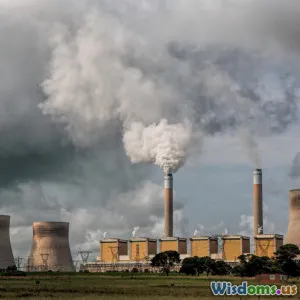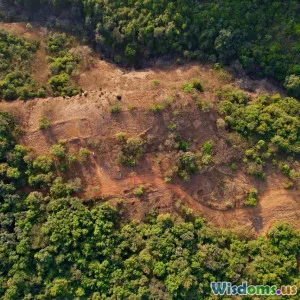
The Impact of Clean Energy on Communities
9 min read Explore how clean energy transforms communities by boosting economies, improving health, and fostering sustainability. (0 Reviews)
The Impact of Clean Energy on Communities
Introduction
In the face of accelerating climate change and environmental degradation, clean energy stands as a beacon of hope and innovation, promising not just environmental preservation but profound community transformation. Imagine neighborhoods where air is fresher, jobs are plentiful, and energy costs are lower. This is no mere fantasy: clean energy initiatives are actively reshaping communities across the globe. From rural villages embracing solar microgrids to urban centers capitalizing on wind and geothermal technologies, the ripple effects of clean energy extend far beyond reduced carbon footprints. This article delves deeply into the multifaceted impact of clean energy on communities, uncovering economic benefits, health improvements, social equity advances, and the challenges faced along the way.
Economic Revitalization and Job Creation
One of the clearest impacts of clean energy on communities is the economic boost it often delivers. In regions plagued by unemployment or economic decline, investments in renewable energy infrastructure serve as a catalyst for job creation and economic growth.
Renewable Energy as a Job Engine
According to the International Renewable Energy Agency (IRENA), as of 2023, the renewable energy sector employs over 13 million people worldwide, a number continually growing. These jobs not only span pioneering engineers and scientists but also include technicians, manufacturing workers, installers, and maintenance personnel, providing opportunities for a diverse workforce.
Consider the example of Texas, USA, where wind energy projects have transformed once-declining rural communities. The city of Sweetwater, often called the “Wind Energy Capital of Texas,” now benefits from thousands of jobs generated by turbine manufacturing and wind farm operations. Local economies, previously reliant on diminishing oil production, have been revitalized, showcasing how clean energy can foster economic resilience.
Similarly, in Germany’s Ruhr region, a former coal mining heartland, extensive investments in renewable energy industries like solar and bioenergy have played a critical role in economic diversification. This transition not only preserved livelihoods but also promoted sustainable prosperity.
Financial Savings and Energy Independence
Beyond job creation, clean energy projects often help communities reduce energy costs and enhance energy independence. For instance, Hawaii’s investment in solar power coupled with battery storage systems has significantly cut residents’ electricity bills and lowered dependence on imported fossil fuels, helping to stabilize the economy.
By empowering communities to generate their own energy, clean technologies can protect local economies from the volatility of global fossil fuel prices and geopolitical tensions, fostering greater financial stability.
Health and Environmental Benefits
The shift to clean energy holds undeniable advantages for public health and environmental quality. Many communities, particularly those near fossil fuel power plants or heavy industries, suffer disproportionate health problems due to pollution.
Air Quality Improvements
According to the World Health Organization (WHO), air pollution is responsible for 7 million premature deaths annually. Transitioning from coal and oil to renewables drastically reduces particulate matter and toxic emissions.
One inspiring example is the city of Pittsburgh, USA. Once dubbed the “Smoky City” for its heavy steel and coal industries, Pittsburgh’s aggressive clean energy policies—including expanding solar power and energy efficiency—have contributed to significant improvements in air quality and corresponding drops in respiratory illnesses like asthma.
Climate Resilience and Adaptation
Clean energy also helps communities adapt to climate change by reducing greenhouse gas emissions, thus mitigating global warming. For vulnerable communities prone to extreme weather events—such as coastal or arid regions—this mitigation is crucial.
Furthermore, decentralized clean energy systems, such as solar microgrids in the Philippines after typhoons, have proved essential in restoring power swiftly during disasters, enhancing community resilience.
Advancing Social Equity and Community Engagement
Adopting clean energy technologies provides an opportunity to address long-standing social inequities that disproportionately affect marginalized communities.
Energy Access and Equity
Globally, approximately 770 million people still lack access to electricity. Clean energy solutions like solar home systems and mini-grids are revolutionizing energy accessibility in remote or underserved areas.
In Kenya, the off-grid solar company M-KOPA offers pay-as-you-go solar kits, making clean energy affordable and enabling rural communities to improve educational outcomes by providing reliable lighting for evening studies.
Community Ownership and Participation
Clean energy projects that include community ownership models empower local populations, ensuring benefits stay within the area.
In Denmark, community wind cooperatives allow residents to invest directly in renewable projects, fostering local engagement and equitable economic returns. Such models strengthen social cohesion and enable stakeholders to have a real voice in their energy futures.
Challenges Facing Clean Energy Integration
While clean energy’s benefits for communities are profound, numerous challenges must be navigated.
Infrastructure and Investment Gaps
Many regions require significant upfront capital to establish renewable infrastructure, which may be a hurdle, especially in developing countries. Overcoming this requires innovative financing mechanisms, such as public-private partnerships and microfinance.
Technological and Regulatory Barriers
Grid integration issues, intermittency of sources like wind and solar, and regulatory instability can stall projects, emphasizing the need for robust policy frameworks and technology improvements.
Social Acceptance
Despite many benefits, some clean energy projects face local opposition due to concerns about land use, aesthetics, or ecological impacts. Meaningful community engagement and transparent planning processes are essential to address these concerns.
Conclusion
The embrace of clean energy marks a transformative epoch for communities worldwide. From economic rejuvenation with new industries and jobs to tangible health improvements and social empowerment, the impact is both broad and profound. Real-world examples—from Texas’ wind corridors to Kenya’s solar home systems—illustrate how clean energy anchors resilient, vibrant, and equitable communities.
However, successful transformation demands navigating infrastructural hurdles, regulatory complexities, and community dynamics thoughtfully.
For readers, the takeaway is clear: the future bound to clean energy is not just about reducing carbon footprints, but about building communities that thrive economically, breathe easier, and embrace equity. Supporting clean energy initiatives—be it through personal choices, policy advocacy, or investment—can empower every individual to be part of this global, green revolution.
The impact on communities is not an abstract ideal; it is an unfolding reality with immense potential for positive change. The question now is how fast and how inclusively society will harness this momentum.
Sources & Further Reading:
- International Renewable Energy Agency (IRENA) Reports
- World Health Organization (WHO) Air Quality Data
- Case studies on Texas Wind Energy and Kenya Off-grid Solar Initiatives
- NOAA and UN Climate Resilience Documentation
Rate the Post
User Reviews
Popular Posts




















